#mrs-rankin-draws
Photo



while i’m toad posting, might as well post this old art i drew based on an actual dream i had: toad uses his time machine (yes he has one) and traveled into the modern day. along the way, he found out what memes are and he went back to the 19th century to tell his friends how pickle rick was the funniest shit he has ever seen while laughing uncontrollably. of course, his friends is just beyond confused
#the wind in the willows#witw#witw ratty#witw mole#witw badger#witw toad#the reluctant dragon and mr toad show#rankin bass#mr toad#artists on tumblr#probably the reason why i never post it because nobody else would understand#worst thing is that this was one of my dreams i could actually understand and wasn’t completely nonsensical#and i was apparently super tired when i was drawing this because i couldn’t bother to give it more shading#pink octodoodles
17 notes
·
View notes
Note
How do the doms react to a sub that enjoys their punishment?
Mr Rankin: Laughs and begins to see how far he can take it
Coach: Does his best to end the slut quickly and make it hell
Carter: Similar to Coach but a little more forgiving
Mark: Makes good use of the willing sub
Paxton: Draws out his punishment to enjoy it
Minho: Feels better about what he's doing and let's loose a little
9 notes
·
View notes
Text

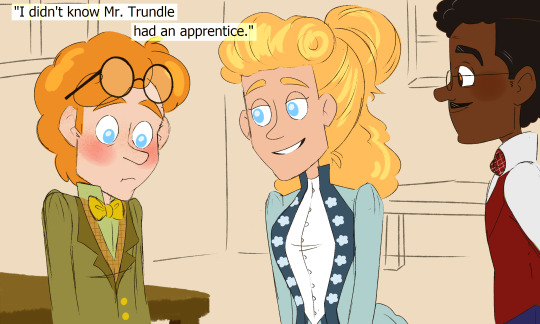



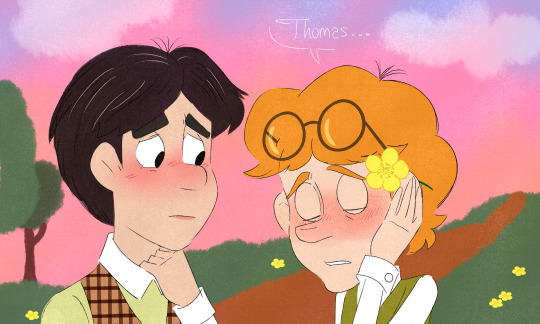


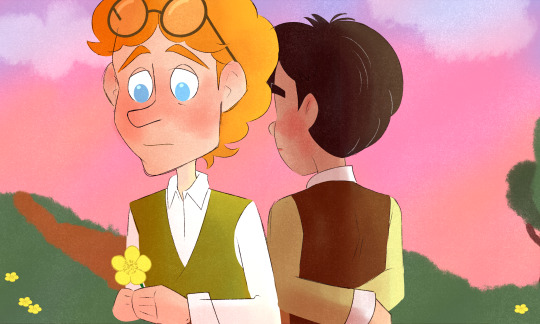
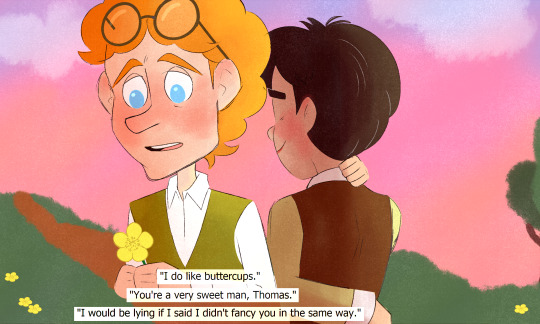

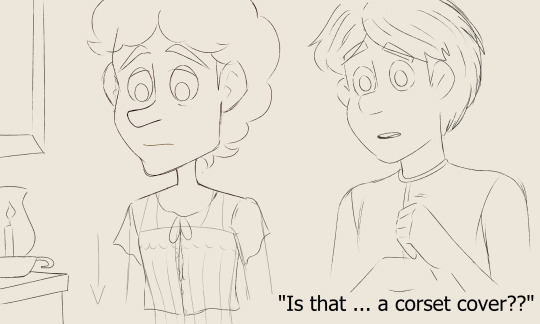
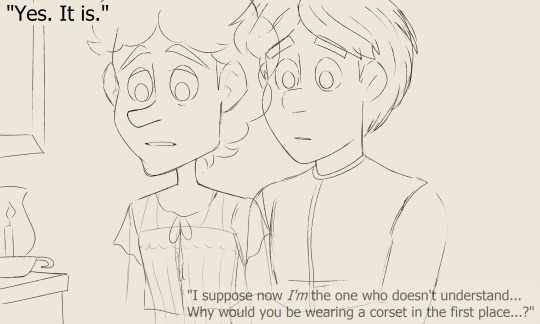
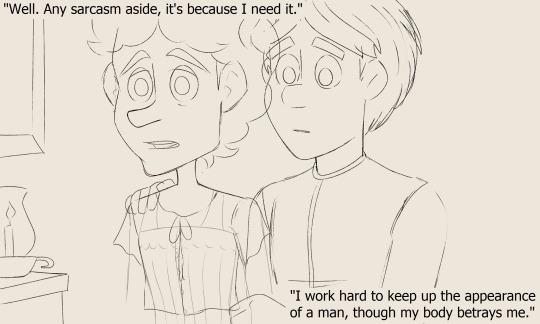

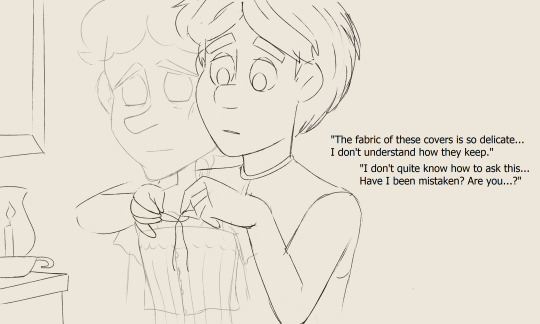
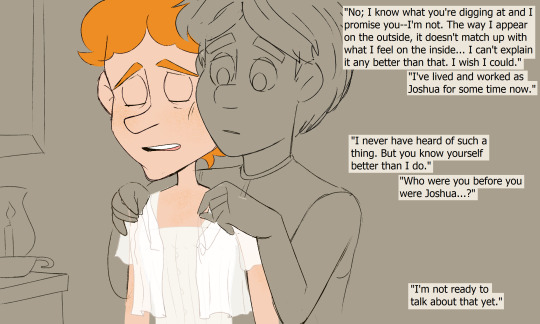
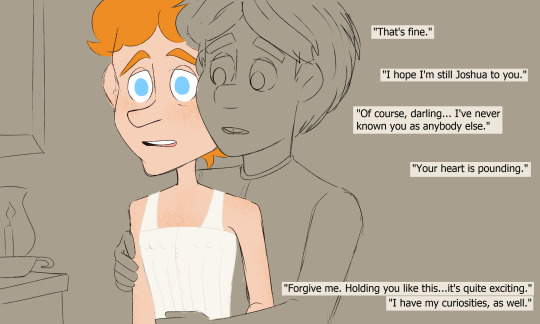
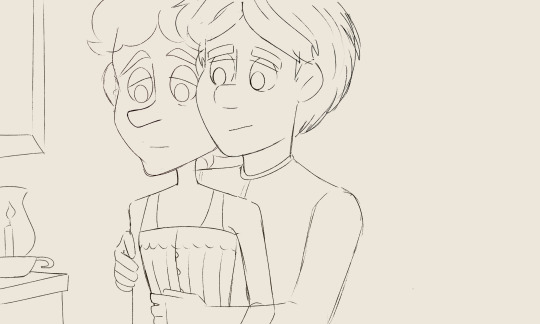
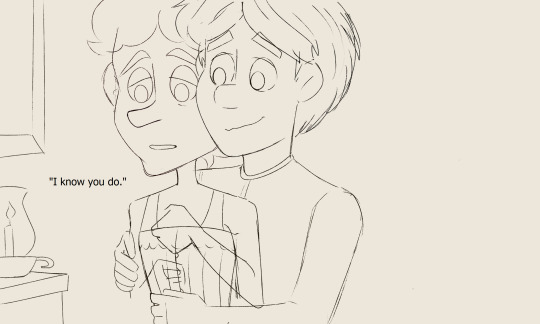
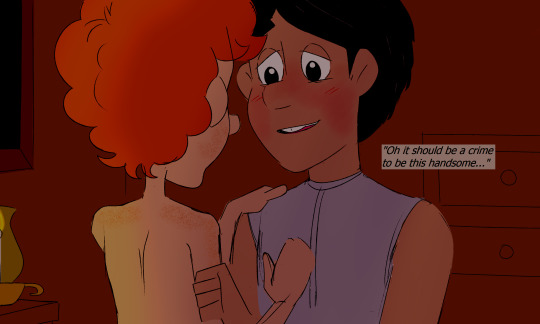
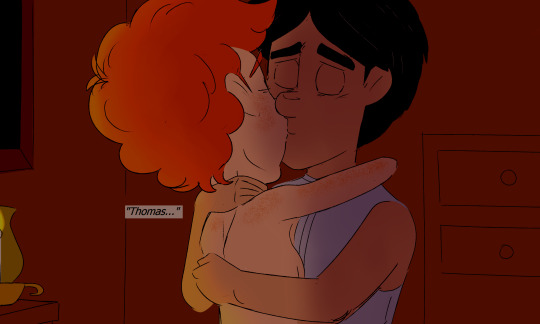

what’s up rankin/bass fandom it's time for a super-massive post because uhhhh i'm SO normal about twas the night before christmas
since the GOATs arthur rankin and jules bass are no longer here to expand upon the backstories of their characters i’m happy to do it on their behalf
i did a bit more wrt how joshua got into clockmaking and met sarah!! joshua being trans is uhhHH very important to me
i also decided to drop more joshua/mr. thistlewhite (thomas) propaganda 🤪 i took a drawing that i did last year and added six more to it
[[i love the idea that thomas is a banker and the thistlewhites move north because thomas gets a job at a bigger bank making more money and iggy gets to experience winter for the first time. he likes the neighbor kids. and thomas likes their dad ;3]]
the question is can a clockmaker and a banker and their wives and kids and talking animal companions really be a family?? the answer is yes of course.
[[reposting bc i really did post this WAY too early and i want the rankin/bass blogs who are getting ready to post again to see this]]
#spec art#rankin bass#rankin/bass#twas the night before christmas 1974#the year without a santa claus 1974#partial nudity#but there's really nothing showing besides skin
7 notes
·
View notes
Text
Santa's Slay (2005)
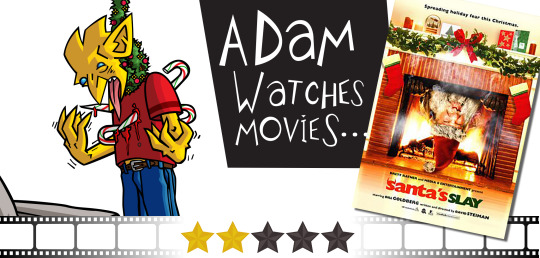
Santa’s Slay is almost good. Writer/director David Steiman tries - and fails - to make a movie that's "so bad it's good" on purpose but when he indulges in holiday-themed puns and gruesome slayings, you'll have a good time. Call me sick, but seeing people drowned in eggnog, skewered with candy canes, blown up with trick presents and run by Santa's sleigh, it’s ghoulish fun. All that’s missing is a story worth watching to bring all the Yuletide carnage together.
The result of a virgin birth through a woman and Satan, Santa Claus (Bill Goldberg) indulged in yearly massacres from which Christians protected themselves using Christmas Mass. In 1005 A.D., an angel defeated him in a curling match and sentenced him to be nice and deliver presents for 1,000 years. Now, it’s 2005 and he’s eager to indulge in his bloody ways again.
The film’s highlights are the various killings. Some of them you see coming. Others take you by surprise. Cinema had to include someone getting skewered by a menorah eventually and if that’s the sort of thing you want to see, you’ve got it here. There is also a rather charming homage to the ‘60s Rankin/Bass Christmas specials that’s sure to put a smile on your face. It’s so ridiculous it actually works.
Every other aspect of the film disappoints. The special effects are dodgy but that’s ok. You wouldn’t mind so much because they can - at times - enhance the dark humor. The insurmountable issue is the “plot”, which should’ve been tossed away and redone completely. For the most part, there is no story. Santa randomly shows up and kills everyone in sight while making puns - if I never hear "ho ho hoes" again, it will be too soon. It’s funny (for the most part) but not so original that audiences won’t be left wanting more. When Mr. Claus isn’t leaving bloody footprints in the snow, we follow Nicholas Joseph Yuleson (Douglas Smith) and his girlfriend, Mary McKenzie (Emilie de Ravin) trying in vain to warn everyone in the town of Hell of what’s happening. It gets repetitive fast.
I know what you’re thinking. Santa came from a virgin birth. The other principal characters (other than Nick’s grandpa, played by Robert Culp) are “Joseph” and Mary, the hero’s first name is Nicholas. There’s got to be some connection between them, some twist at the end that proves these people were destined to battle, right? No, there isn’t. This is why I'm complaining about the writing. The names seem to have been chosen out of a hat at random instead of serving a satisfying purpose. In fact, when you look at the big picture, you’ll realize Nicholas has no impact on this story whatsoever. The dialogue is clunky, meandering and primarily included to pad out the movie - "say anything, as long as it helps us reach feature-length running time". At 78 minutes, Santa's Slay is more of an elongated sketch than a proper film. The ending is abrupt and unsatisfactory and the film is sloppy. A great example comes right at the beginning. The picture opens with pages of illuminated manuscript detailing through illustration the “true” story of Santa Claus but the text surrounding the drawings isn’t even Greek; it’s just random characters with occasional cast member names thrown in. At least it sets your expectations appropriately.
Santa’s Slay is bad but not so bad you can’t have somewhat of a good time with it. If you throw this on the TV during your holiday get-together, your guests can occasionally look at what's on the screen, rub their eyes in bewilderment and instantly have something to chat about. Sitting down and paying attention would only mean becoming appalled by the sloppy execution. If you choose to watch Santa's Slay, stick around for the admittedly cleverly done end credits, particularly if you’re a fan of the WWE. (November 27, 2020)

#Santa's Slay#movies#films#movie reviews#film reviews#David Steiman#Bill Goldberg#Douglas Smith#Emilie de Ravin#Robert Culp#Saul Rubinek#Dave Thomas#Rebecca Gayheart#Chris Kattan#Fran Drescher#2005 movies#2005 films#christmas movies#christmas films
0 notes
Text
oh yeah
list of horror movies i made like a week ago and then forgot about. because i was mad that everyone watches the same ones over and over. so these are some less-talked about movies that I enjoy
full list under cut! some of these movies are really good, and some of them are really bad. all of them are things i watch on a semi-annual basis for the halloween season or just for fun. movies are listed in chronological order (1958 - 1988) with brief descriptions or facts i know. if youve seen something on here, let me know what you thought of it!
author's picks:
The Blob (1958) ; The Raven (1963) ; The Haunting (1963) ; The House That Dripped Blood (1972) ; Penda's Fen (1974) ; House (1977) ; The Company of Wolves (1985) ; Bad Dreams (1988)
this is a CONDENSED version of what i could just think of in the moment and is primarily movies from the 1960s. maybe ill add more when i have the time
The Blob (1958) [sci-fi horror] - theres a blob terrorising some late 50s teenagers. slow beginning but has some really cool practical effects for the blob and the best opening song ever. if you just want to hear the song look up "the blob" by the five blobs. blob doesnt look like a word anymore
13 Ghosts (1960) [haunted house]- a family moves into a haunted house, but inherits special goggles that allow them to see the ghosts. theatregoers themselves would receive coloured cellophane glasses and be instructed to put them on during the ghost scenes, where the film would switch into 2 different colours--actors and the sets overlayed with blue, while the ghosts would be overlayed in red. the different ghost stories are neat and the 13th ghost reveal is very cool. will make you very angry at the pronunciation of "ouija" (as in the board) for the rest of your life if you know how "j" is pronounced in german
The Little Shop of Horrors (1960) [horror/comedy] - NOT the musical (though that is very good), but the movie the musical was based on! slightly different in some aspects. i think all of the available copies of this are really low quality but still a fun watch
The House of Usher (1960) [gothic horror] - The Fall of the House of Usher adaptation starring Vincent Price. shot in 15 days with 1/3rd of the total budget going to Price. very cool sets
The Raven (1963) [gothic horror/comedy] - starring Vincent Price and Boris Karloff, expands upon The Raven poem. a very funny movie + theres wizards :)
The Comedy of Terrors (1963) [horror/comedy] - starring Vincent Price, Peter Lorre, Boris Karloff, and Basil Rathbone. follows two undertakers (Price and Lorre) trying to save money with their failing funeral home and dealing with their landlord. nobody in this movie is a good person
The Haunting (1963) [haunted house]- adaptation of Shirley Jackson's The Haunting of Hill House. this house is alive and loves you soooooo much <3 you cant leave, and you wont want to <3
The Day of the Triffids (1963) [sci-fi horror] - fucked up alien plants. all i have to say about it, really
Dr. Terror's House of Horrors (1965) [horror anthology]- despite the name, this anthology series is based on a train. the 'house of horrors' of the title is actually what Peter Cushing's character calls his deck of Tarot cards. 5 passengers draw a card from the deck and 5 stories are told, each unique in genre
The Ghost and Mr. Chicken (1966) [haunted house/comedy] - starring Don Knotts, who plays a wanna-be-reporter investigating a local fucked up haunted house. the reason i love chicken noodle soup
Mad Monster Party? (1967) [stop-motion musical comedy] - Rankin-Bass' lesser-known stop-motion holiday special. a really cute movie with a fun twist at the end, nothing incredible but very enjoyable
The Dunwich Horror (1970) [supernatural horror] - very very lose adaptation of HP Lovecraft's story by the same name, and largely considered the first successful adaptation of Lovecraft on screen. psychedelic as hell. a good time with friends
Valerie and Her Week of Wonders (1970) [folk horror/Czechoslovak new age] - A Czechoslovak surrealist fantasy horror based on the 1935 novel of the same name. a very beautiful, dream-like film that deals in a lot of symbolism. the film is concerned with the troubles maturing girls face, including scenes of sexual harassment, which some viewers may find uncomfortable to watch
Willard (1971) [no idea] - a social misfit befriends rats, which he uses to kill a guy. yeah. a good time
The House that Dripped Blood (1971) [horror anthology] - what i thought everyone was talking about instead of the mountain goats. 4 stories that take place in the same fucked up house, each originally written and then scripted by Robert Bloch. each story is its own genre, but all are implied to have occurred due to some effect of the house itself. Jon Pertwee from doctor who is there, as are Christopher Lee and Peter Cushing
Ben (1973) - the sequel to Willard (1971), where a boy befriends the rat leader of the pack from Willard
Penda's Fen (1974) [folk horror] - a young boy comes to terms with his sexuality while experiencing divine visions of both Christian and pagan nature. very rich in symbolism with incredible commentary on capitalism and pollution. if you watch any movie on this list, make it this one.
House (1977) [architectural horror/comedy] - a schoolgirl and her six friends travel to her ailing aunt's country home, where the house eats them one by one. an experimental Japanese film shot without a storyboard over a period of 2 months, inspired by Jaws. fucked up house <333
The Company of Wolves (1984) [gothic fantasy/horror] - this is a more popular one but it's very good. very very artsy and dream-like, shows of several different werewolf stories with unique transformation styles and super awesome practical effects. great movie for lovers of werewolves and wet practical effects
Bad Dreams (1988) [supernatural mystery/slasher] - a girl involved in a cult group during the 70s survives the cult's mass suicide and goes into a coma, before waking up in the late 1980s. she has visions of the cult leader as her friends seemingly die from suicide. the twist for this confused me at first and motivations are not at all made clear, but theres lots of blood and Bruce Abbott is there. less ableist than you would expect from an 80s horror movie set in a hospital
Transylvania 6-5000 (1985) [horror/comedy] - kind of like Rocky Horror Picture Show but without the musical aspect. two tabloid reporters travel to Transylvania to discover the truth about supposed Frankenstein's Monster sightings, encountering horror movie staples (a mummy, a vampire, a werewolf) along the way, each with a twist
#wtf do i tag this#movie recommendation#halloween#horror#horror movies#im not tagging anything else thats too many movies and genres
0 notes
Text
Thursday Thrill: Exciting Events This Week!

Nicole Newman, the event editor of WhatsOn, has once more listed some amazing events for this week. The events have already begun, so don’t wait to put on your sneakers and have some fun this week. Here are a few of the week’s best events.
UKG Brunch All Rave
4 Feb
A highlight for this weekend's clubbing feast takes you to London for a bottomless UKG brunch daytime rave. If you are bored out of your brains this Saturday and at a loose end and love, love, love dance music then UKG is where you need to be. With liked minded clubbers heading on out to get their rave on for this whopping 8-hour experience. Taking an alternative approach to the clubbing experience, as most know it! You can feast on gorgelicious brunch food and wash it down with delicious drinks until the 60-minute clock stops. And then hit the dance floor, working up a sweat to some of the best dam finest UK garage music that anyone could hope for.
This weekend has one extensive DJ line-up and live PA sets playing for an up-for-it regular and new crowd. Expect something very special as UKG Brunch is celebrating its 5th Birthday. This only goes to show this is one clubbing experience that's made its mark and is here to stay.
Bringing the party to one of London's most standout iconic venues, the Ministry of Sound which has hosted the best promoters weekly to sellout events. Hosting two mega rooms to have your best clubbing party in. Each features a DJ line-up playing non-stop garage music. In The Box is Matt Jam Lamont, MC Creed, MC Bushkin, DJ Cartier, MC Kie, Spin E.B {Birthday Set}, Twin MC's, MC Vapour, Masterstepz, Hyperactive MC, MC Rankin, RuffTuch, MR O.V and live PAs from Kele Le Roc, Babycakes
In The 103 - Hosted by Platform 81 is Mike 'Ruff Cut' Lloyd, Pied Piper, Listener, Vibesey {Essence, DJ Bright & Capital - B}, CKP, MC Ultra, Sharky P, Kofi B, Wicked MC and more
Do you really like this? Then best get your tickets quick before it's a sellout!
For more info & tickets ukgbrunch.com
Heritage 7
4 Feb
The Hare & Hounds has made its mark amongst some of the biggest-known venues in Birmingham. Smaller in comparison this holds no bearing on this venue. The point is it hosts sell-out parties. Why? Because those that go there know what they're in for and that's nothing more than a spectacular night of their life which leaves them wanting more. This venue is the venue of the revival parties from some of the standout clubbing brands of an era when the people going out were loved up in the music and the DJs giving us their sounds. The ones that kept the dance floors packed with happy smiling people. Not professional dancers, but making a maximum effort in dancing to beats that could be felt in the heart. Where there were no stabbings or violence and everyone looked out for each other.
The Hare & Hounds is recreating this time again. Drawing a crowd of clubbers past but open to new ones allows them into a window of a time that people only lived for their weekend. Living for the weekend is more than a saying. It is real life and was what got you through the week with an excitement that was so overflowing come Friday it was hard to contain. It was ecstasy without taking ecstasy. The saying buzzing comes to mind.
Heritage 7 takes centre stage this weekend for the 7th birthday event. In Room 1 (hosted by Heritage) K Klass (DJ Set and Live P.A), Allister Whitehead, Andy Baxter B2B Alex Hammond, Neil Rushton, Sammy Dean, and Room 2 (hosted by Wobble) Justin Robertson, Lottie, Phil Gifford, Kezz
For more info & tickets ukgbrunch.com
Symmetry Recordings London
4 Feb
The Steel Yard is a hallowed clubbing ground that has featured a vast catalogue of standout sell-out clubbing brands bringing a big capacity crowd. For February, heavy-weight bass connoisseurs will deliver a plate full of digestible D’n’B showcasing the excellence of its production. From months in the planning February event features a music intense line-up of carefully selected DJ pros including Break, Calyx, The Sauce, Kyrist, Sp: Mc, Fox Plus more to be announced. So keep your head to the ground! Causes it's gonna be a bangin' night!
For more Info & tickets thesteelyard.london
A Journey to “Close the Care Gap”
4 Feb
Close the Care Gap will be the topic of World Cancer Day in 2022–2024. In 2022, the emphasis was on "Realizing the situation." The three-year campaign will come to an end with the theme "2024: Together, we challenge those in power," which will be followed by this year's theme, "2023: Uniting our voices and taking action."
Let's fly the flag on this 4th of February. Let's use hashtags to take over social media and make it a hot issue to raise awareness. Most importantly, let's make a commitment to ourselves that we will be informed, that we will band together, and that we will be acting.
For more Info www.worldcancerday.org
Read the full article
0 notes
Text


Belated addition to the Miser-cord server redraw challenge!
#snow miser#heat miser#mother nature#santa claus#mrs. claus#north wind#miser brothers#a miser brothers christmas#year without a santa claus#santa claus is coming to town#rankin bass#missy draws#digital fanart#shocky miser#aqua miser#rankin bass oc#self ship#self insert#rankin bass discord#rankin bass fandom#Bob the elf#Tinsel the Elf#redraw challenge#screenshot redraw
109 notes
·
View notes
Photo
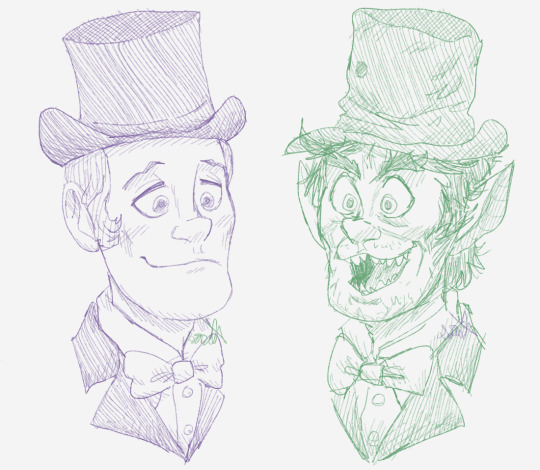
Two of them
#dr. Jekyll#mr. Hyde#mad monster party?#mad monster party#rankin bass#dr. jekyll and mr. hyde#art#fanart#my art#digital art#procreate#rankin/bass#horror#drawing#r/b
100 notes
·
View notes
Photo

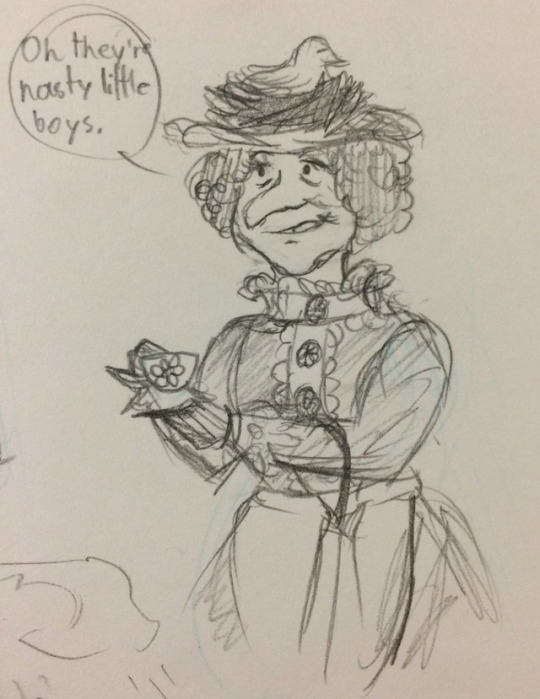
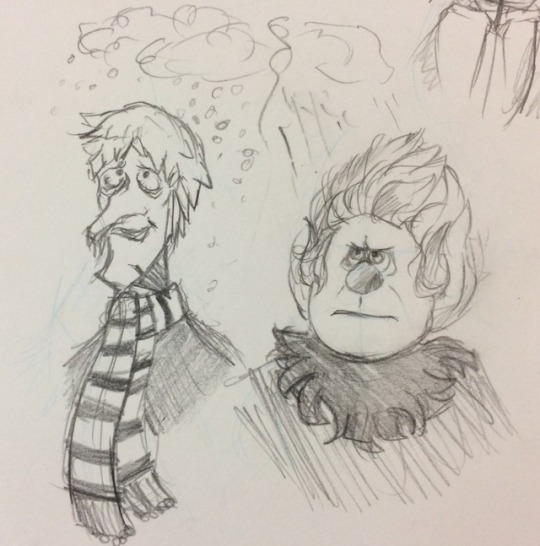
I see the Rankin-Bass craze and raise to you this: The Year Without a Santa Claus.
#artists on tumblr#Fanart#rankin bass#the year without a santa claus#mrs claus#mother nature#snow miser#heat miser#pencil#traditional art#art#draws#my art
283 notes
·
View notes
Photo

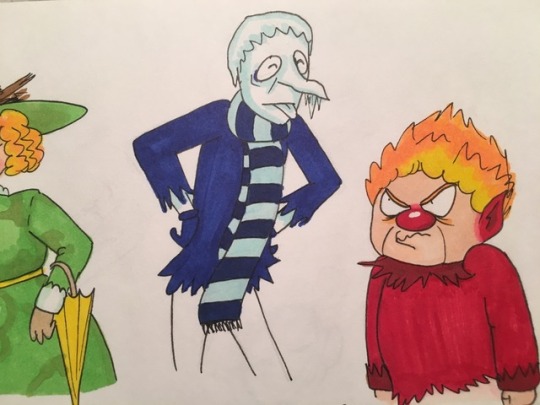


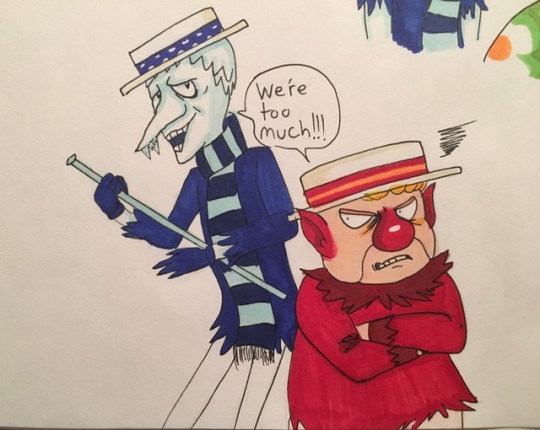
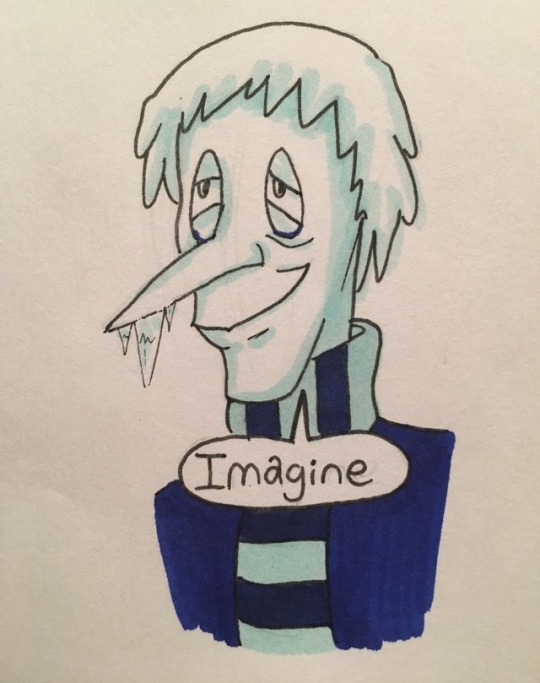
Elf Practice revived my love for the Rankin Bass Christmas movies this holiday season. So I thought I’d draw some of the characters from my favorite of the films~ Also I definitely didn’t get Mother Nature’s dress right but whatever.
#the year without a santa claus#rankin bass#mrs claus#mother nature#the miser brothers#snow miser#heat miser#how the hell do you draw snow miser???#my art#art tag
58 notes
·
View notes
Photo
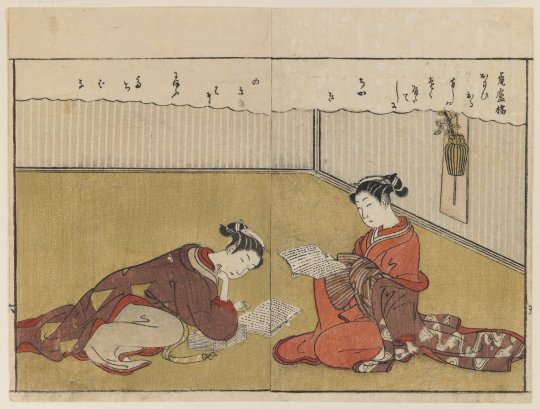
Closing out National Poetry Month, our Spring Interns paired some of their favorite poems with works from our collection. We hope you enjoy!
— Jeffrey Alexander Lopez, Curatorial Intern, American Art & Arts of the Americas
Image: Suzuki Harunobu (Japanese, 1724-1770). Page From Haru no Nishiki, 1771. Color woodblock print on paper. Brooklyn Museum, Gift of Peter P. Pessutti, 83.190.1
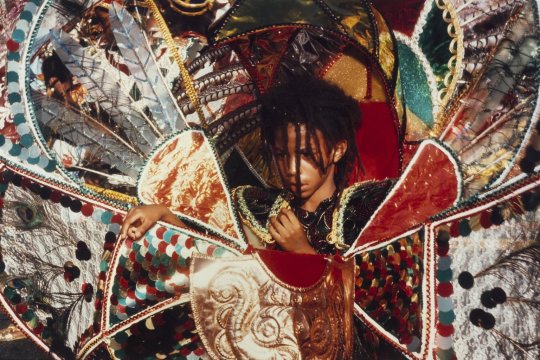
from Citizen: “Some years there exists a wanting to escape...” [Excerpt]
By Claudia Rankine
/
I they he she we you turn
only to discover
the encounter
to be alien to this place.
Wait.
The patience is in the living. Time opens out to you.
The opening, between you and you, occupied,
zoned for an encounter,
given the histories of you and you—
And always, who is this you?
The start of you, each day,
a presence already—
Hey you—
/
— Halle Smith, Digital Collections Intern
Catherine Green (American, born 1952). [Untitled] (West Indian Day Parade), 1991. Chromogenic photograph, sheet. Brooklyn Museum, Gift of the artist, 1991.58.2. © artist or artist's estate
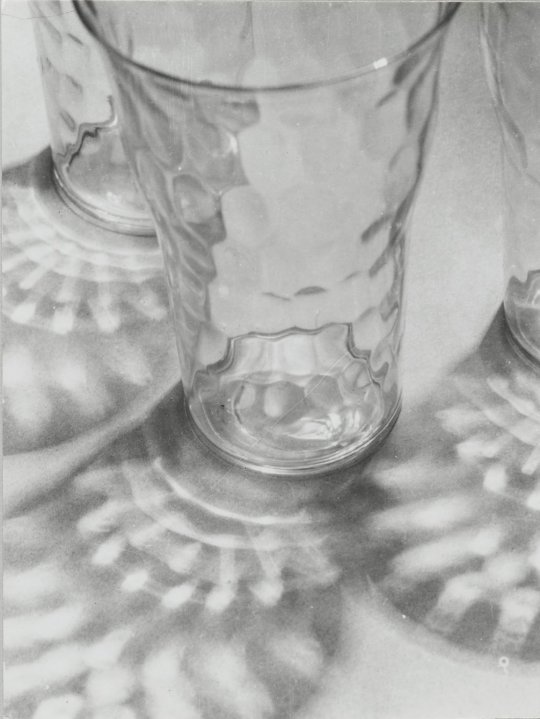
Ode to Enchanted Light
by Pablo Neruda
Under the trees light
has dropped from the top of the sky,
light
like a green
latticework of branches,
shining
on every leaf,
drifting down like clean
white sand.
A cicada sends
its sawing song
high into the empty air.
The world is
a glass overflowing
with water.
Consuelo Kanaga’s black and white photograph captures a dazzling, yet fleeting moment from everyday life. Three textured glasses cast shadows whose patterns are almost kaleidoscopic in effect. We can imagine Kanaga passing by her kitchen table, as she is brought to a halt to take a closer look at, and ultimately to photograph, the simple beauty generated by the play of light and everyday objects. The close-up scale of this image emulates the singularizing framing techniques deployed by Surrealist photographers, who also took parts of everyday life and blew them up in the photographic frame, thereby encouraging their viewers to look at life around us from a different angle. It is a way of saying: Here, take a closer look. Viewing the world with wonder, along with the joy that this act brings, are encapsulated in Pablo Neruda’s poem Ode to Enchanted Light. The speaker observes the way light passes through trees and creates enchanting patterns. He not only observes, but feels the beauty in the simple details of life, from the way light falls from the sky, to the sheen of leaves, to the buzzing of cicadas. Approaching life through such a hopeful lens evokes a glass-half-full perspective. In fact, the speaker is so hopeful that he believes “The world is/a glass overflowing/with water.” I think Kanaga would have felt the same way.
— Kirk Testa, Curatorial Intern, Photography
Consuelo Kanaga (American, 1894-1978). [Untitled] (Glasses and Reflections). Gelatin silver photograph. Brooklyn Museum, Gift of Wallace B. Putnam from the Estate of Consuelo Kanaga, 82.65.25

Easter Wings
By George Herbert
Lord, who createdst man in wealth and store,
Though foolishly he lost the same,
Decaying more and more,
Till he became
Most poore:
With thee
O let me rise
As larks, harmoniously,
And sing this day thy victories:
Then shall the fall further the flight in me.
My tender age in sorrow did beginne
And still with sicknesses and shame.
Thou didst so punish sinne,
That I became
Most thinne.
With thee
Let me combine,
And feel thy victorie:
For, if I imp my wing on thine,
Affliction shall advance the flight in me.
Easter Wings by George Herbet and Martin Bach’s flower vase from the Brooklyn Museum’s Decorative Arts collection reveal the interrelationship between form and function. In Easter Wings, Herbert strategically varies the line length to create an image that enhances the meaning of the poem; when you turn the poem on its side, it resembles the wings of a bird, of which are symbolic of the atonement of Jesus Christ. In doing so, the author is not only telling us his message, but he is showing it visually as well. Similarly, the vase takes the visual form of its function. Its floral design amplifies the meaning of the object, as the vase is meant to hold flowers. In both instances, we see how aesthetic properties of a work echo the meaning and function of the work itself.
— Amy Zavecz
Martin Bach (American, 1862-1921). Vase, ca. 1905. Opalescent glass. Brooklyn Museum, Gift of Mrs. Alfred Zoebisch, 59.143.16. Creative Commons-BY
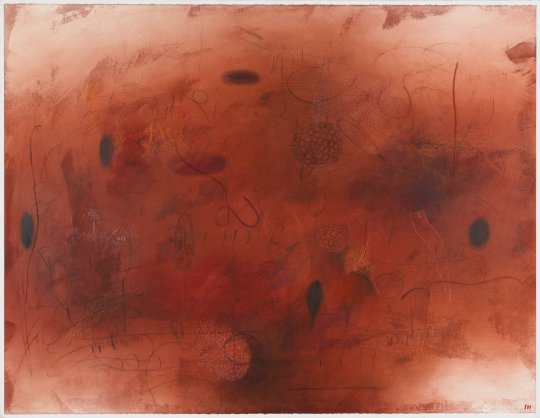
I am the Earth (Watashi wa chikyu) [Excerpt]
by Kiyoko Nagase, Translated by Takako Lento
I am warm, moist soil
I am a single supple stalk
I draw my life
all the way up into corollas of wild berries on the roadside
I am amazed at
a breast of water welling
to flow into the inlet of a muddy rice paddy
I am amazed at
myself being
hot steam blowing fire and sulfur up
from the bottom of the great ocean, deep indigo.
I am amazed at
the crimson blood flow
covering the earth’s surface in human shape;
I am amazed that it swells as the tides ebb and flow, and gushes out monthly under distant invisible gravity
…
I am the earth.
I live there, and I am the very same earth.
In the four billionth year
I have come to know
the eternal cold moon, my other self, my hetero being,
then, for the first time, I am amazed that I am warm mud.
The vivid imagery conjured up by Kiyoko Nagase’s poem is beautifully visualized by Emmi Whitehorse’s painting. The emphasis on deep Earth tones and abstract corporeality in both the poem and the painting really creates an intense metaphysical link between the environment and the self.
— Amanda Raquel Dorval, Archives Intern
Emmi Whitehorse (Navajo, born 1957). Fire Weed, 1998. Chalk, graphite, pastel and oil on paper mounted on canvas. Brooklyn Museum, Gift of Hinrich Peiper and Dorothee Peiper-Riegraf in honor of Emmi Whitehorse, 2006.49. © artist or artist's estate
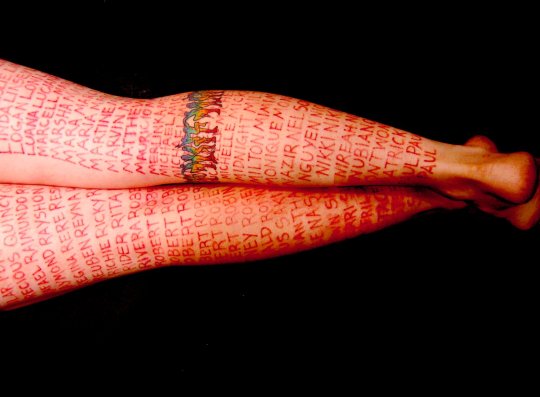
Seventh Circle of Earth
by Ocean Vuong
On April 27, 2011, a gay couple, Michael Humphrey and Clayton Capshaw, was murdered by immolation in their home in Dallas, Texas.
Dallas Voice
1
2
3
4
5
6
7
________________________________________________________
As if my finger, / tracing your collarbone / behind closed doors, / was enough / to erase myself. To forget / we built this house knowing / it won’t last. How / does anyone stop / regret / without cutting / off his hands? / Another torch
streams through / the kitchen window, / another errant dove. / It’s funny. I always knew / I’d be warmest beside / my man. / But don’t laugh. Understand me / when I say I burn best / when crowned / with your scent: that earth-sweat / & Old Spice I seek out each night / the days
refuse me. / Our faces blackening / in the photographs along the wall. / Don’t laugh. Just tell me the story / again, / of the sparrows who flew from falling Rome, / their blazed wings. / How ruin nested inside each thimbled throat / & made it sing
until the notes threaded to this / smoke rising / from your nostrils. Speak— / until your voice is nothing / but the crackle / of charred
bones. But don’t laugh / when these walls collapse / & only sparks / not sparrows / fly out. / When they come / to sift through these cinders—& pluck my tongue, / this fisted rose, / charcoaled & choked / from your gone
mouth. / Each black petal / blasted / with what’s left / of our laughter. / Laughter ashed / to air / to honey to baby / darling, / look. Look how happy we are / to be no one / & still
American.
Ocean Vuong’s “Seventh Circle of Earth” has persisted as one of the great, affective moments of poetry in my life since I first heard Pádraig Ó Toama’s gorgeous reading and discussion of it on his podcast, Poetry Unbound. I decided to pair Vuong’s poem with Mary Coble’s Untitled 2 (from Note To Self) because both works are urgently immersive into the violence and experience of LGBTQ people in the U.S., and for how each work uses text and physicality to address presence, pain, and erasure. Vuong’s poem is actually footnoted to a quote from a news article about a gay couple murdered in Texas. The page is thus blank, absent of text. The reader has to sink below the main stage, the accepted space of word and story, to find the voices of this couple and the depth of their story’s tenderness, eroticism, and utter devastation. Coble’s piece foils the structure and effect of Seventh Circle of Earth by taking what was subverted by Vuong—text and the narrative of violence—wholly to the surface. Her photograph captures her own legs tattooed without ink with the names of LGBTQ individuals victimized by hate crimes. I cannot help but think of Franz Kafka’s short story “In the Penal Colony,” in which prisoners’ “sentences'' are inscribed by the needle of a “punishment apparatus” directly onto their bodies. I was struck by how the curator’s note for this photograph describes Coble’s artistic endeavor here as “harrowing.” The needle in Kafka’s short story is indeed called “The Harrow”. The noun harrow is an agricultural tool that combs plowed soil to break up clumps of earth and uproot weeds and clear imperfections. The verb to harrow means to plague, and in the story’s original German the verb for “harrow”, eggen, is also translated as “to torment”. Kafka and Coble conflate these definitions of “the harrow” in their respective works: they use a needled device, like the true noun definition, as an instrument of torment because of someone else’s idea of punishment and justice. Here, violence is brought to the surface, intimate in as much as we are brought right up to the artist’s skin and into the presence of her and her community’s pain. Together, one can see how each creator physicalizes their respective artistic space to tell the stories of LGBTQ people, of what is tender and harrowing, below the surface and written into the skin.
— Talia Abrahams, Provenance Intern, IHCPP
Mary Coble (American, born 1978). Untitled 2 (from Note to Self), 2005. Inkjet print. Brooklyn Museum, Gift of the artist, 2008.10. © artist or artist's estate
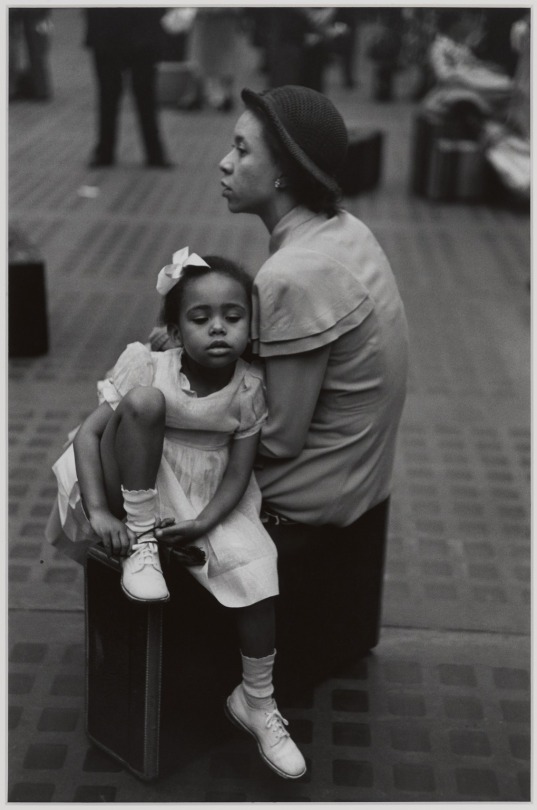
To my daughter Kakuya
by Assata Shakur
I have shabby dreams for you
of some vague freedom
I have never known.
Baby
I don't want you hungry or thirsty
or out in the cold.
and I don't want the frost
to kill your fruit
before it ripens.
I can see a sunny place
Life exploding green.
I can see your bright, bronze skin at ease with all the flowers
and the centipedes.
I can hear laughter,
not grown from ridicule
And words not prompted
by ego or greed or jealousy.
I see a world where hatred
has been replaced by love.
and ME replaced by WE
And I can see a world replaced
where you,
building and exploring,
strong and fulfilled,
will understand.
And go beyond
my little shabby dreams.
This poem is featured in Assata Shakur’s memoir, Assata: An Autobiography. It details her hope for a better world that her daughter can grow up in. This poem is positioned in the book when Shakur is facing increasing prosecution as a result of her activism and affiliations with the Black Panther Party and Black Liberation army. Being written more than 30 years after this picture was taken, the poem summons me to think about the trauma that many Black women face and how much of that trauma gets passed down to their children. The black and white photo of a mother and daughter provides a nice visual to the poem. “The image of a Black mother and child sitting on their luggage reflects the little-discussed history of segregated transportation in the northern United States. Through the 1940s, Penn Station officials assigned Black travelers seats in Jim Crow cars on southbound trains” (Brooklyn Museum). The photograph of train passengers waiting outside of Manhattan’s Pennsylvania Station especially echoes the verse “I don’t want you hungry or thirsty or out in the cold.” The overall optimistic tone of Shakur’s poem alters our relationship to the image as we imagine the mother pictured above hoping for the exact same things
— Zaria W, Teen Programs intern
Ruth Orkin (American, 1921-1985). Mother and Daughter at Penn Station, NYC, 1948. Gelatin silver photograph, sheet: 13 15/16 × 11 in. (35.4 × 27.9 cm). Brooklyn Museum, Gift of Mary Engel, 2011.22.3. © artist or artist's estate
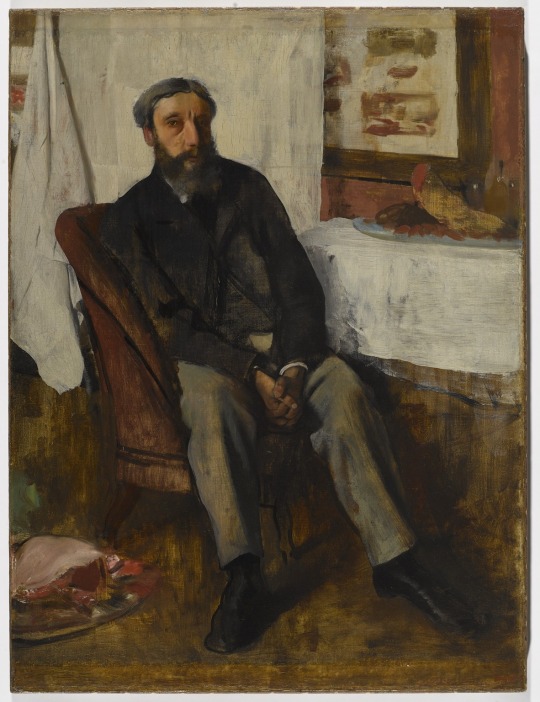
Crunch.
By Kailyn Gibson
I retch as a mass of sinew lies between my lips.
The sensation is unbearable.
Fortunately, the jar of flies has gone missing again.
Slowly, surely, and yet never sure at all,
the quiet of buzzing rings through the in-between.
It is a symphony wrought from blood and bone.
Saliva drips from bleeding, hungry gums,
And the crunch of glass echoes the grinding of molars.
If I proffered a sanguine smile, would masticated shards look like teeth?
Would they gleam just as prettily?
The flies ring,
and the rot calls.
— Kailyn Gibson
Edgar Degas (French, 1834-1917). Portrait of a Man (Portrait d'homme), ca. 1866. Oil on canvas. Brooklyn Museum, Museum Collection Fund, 21.112

Excerpt from Autobiography of Red
A novel in verse by Anne Carson
7. If Helen’s reasons arose out of some remark Stesichoros made either it was a strong remark about Helen’s sexual misconduct (not to say its unsavory aftermath the Fall of Troy) or it was not.
8. If it was a strong remark about Helen’s sexual misconduct (not to say its unsavory aftermath the Fall of Troy) either this remark was a lie or it was not.
9. If it was not a lie either we are now in reverse and by continuing to reason in this way we are likely to arrive back at the beginning of the question of the blinding of Stesichoros or we are not.
10. If we are now in reverse and by continuing to reason in this way are likely to arrive back at the beginning of the question of the blinding of Stesichoros either we will go along without incident or we will meet Stesichoros on our way back.
11. If we meet Stesichoros on our way back either we will keep quiet or we will look him in the eye and ask him what he thinks of Helen.
12. If we look Stesichoros in the eye and ask him what he thinks of Helen either he will tell the truth or he will lie.
13. If Stesichoros lies either we will know at once that he is lying or we will be fooled because now that we are in reverse the whole landscape looks inside out.
This excerpt comes from Appendix C of Anne Carson’s Autobiography of Red, a novel in verse. A translator and classicist herself, Carson mixes fact with fiction in her unconventional retelling of the myth of Geryon and Hercules, beginning with a roundabout introduction to the poet Stesichoros. Autobiography presents a captivating example of recent Queer projects that take up Classical material as their basis. A fascination with the Classical past has pervaded our modern conception of sexual identity politics, down to the very etymology of the word “lesbian.” In this fascination, I see the same desire to capture Classical imagery as cultural heritage which has also pervaded American museums, albeit with significantly different aims. The fresco pictured above comes to mind, which passed through many collectors and was even purchased by the museum before anyone pegged it as a modern piece—not an original Roman fresco. John D. Cooney, a 20th century curator of our Egyptian, Classical, and Ancient Near Eastern Art collection, wrote that “the unclad and somewhat winsome charms of the lady [probably] diverted objective glances.” Both in the case of the fresco and Carson’s novel, the “unclad and somewhat winsome charms” of the Classical past shape and reshape our understanding of history.
— Kira Houston, Curatorial Intern, Egyptian, Classical, and Ancient Near Eastern Art
Modern, in the style of the Roman Period. Part of a Fresco, early 19th century C.E. Clay, paint. Brooklyn Museum, Ella C. Woodward Memorial Fund, 11.30.
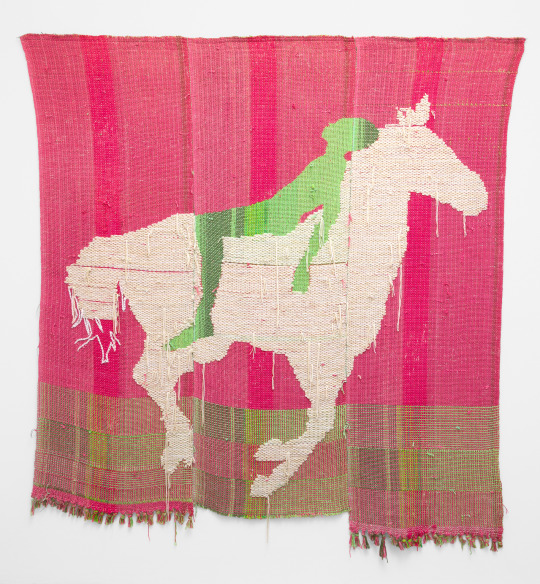
Late Fragment
by Raymond Carver From A New Path to the Waterfall,
Atlantic Monthly Press, 1989.
And did you get what
you wanted from this life, even so?
I did.
And what did you want?
To call myself beloved, to feel myself
beloved on the earth.
— Shori
Diedrick Brackens (American, born 1989). when no softness came, 2019. Cotton and acrylic yarn. Brooklyn Museum, Purchased with funds given by The LIFEWTR Fund at Frieze New York 2019, 2019.12. © artist or artist's estate
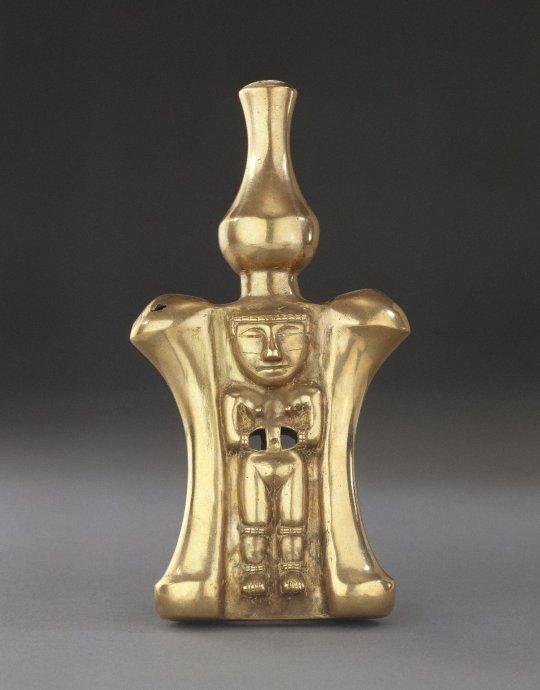
Jaguar
By Francisco X. Alarcón
some say dicen que ahora
I'm now almost estoy casi extinto
extinct in this park por este parque
but the people pero la gente
who say this que dice esto
don't know no sabe
that by smelling que al oler
the orchids las orquídeas
in the trees en los árboles
they're sensing están percibiendo
the fragrance la fragancia
of my chops de mis fauces
that by hearing que al oír
the rumblingc el retumbo
of the waterfalls de los saltos
they're listening están escuchando
to my ancestors' el gran rugido
great roar de mis ancestros
that by observing que al observar
the constellations las constelanciones
of the night sky del firmamento
they're gazing están mirando
at the star spots las motas de estrellas
on my fur marcadas en mi piel
that I am and que yo soy
always will be y siempre seré
the wild el indomable
untamed espíritu silvestre
living spirit vivo de esta
of this jungle jungla
While the author of the poem speaks about animals, their words can also speak on behalf of the erasure of indigenous peoples in South America. Much like the jaguar, indigenous traditions and culture are very important to life in South America. Despite their marginalization, Indigenous peoples throughout the Andes used coca leaves to help with the altitude. The use and cultivation of coca are criminalized throughout most of South America despite it being essential to indigenous cultures. This vessel was used to contain lime which would activate the coca leaves. Much like the jaguar, indigenous traditions are also faced with endangerment despite being woven into the fabric that is Latin America. Through the opposite man and woman figures, the vessel shows the duality that is important to the Quimbaya people which is still relevant to Colombians today.
Aunque el autor del poema habla sobre los animales, sus palabras también comunican el sentimiento común de la supresión de los indígenas en Suramérica. Con la mención del jaguar, se puede entender en el poema que la cultura y las tradiciones de las personas que son indígenas son sumamente importantes para la vida en Sudamérica. A pesar de su marginación, los indígenas en Los Andes utilizan la hoja de coca para ayudar en la altura de las montañas. El uso y el cultivo de la hoja de coca fue criminalizado (penalizado) a través de Sudamérica, aunque su uso para los indígenas era vital y esencial para su cultura. Este recipiente que se utiliza contiene limón lo que activa la hoja de la coca. Similarmente al jaguar, las tradiciones de los indígenas siempre estaban en peligro aunque estuvieran entrelazadas en las telas de lo que sería Latinoamérica. A través del hombre opuesto y las figuras de mujeres, el recipiente muestra la dualidad de lo que es importante para las personas que son Quimbaya, algo que todavía hoy es relevante para los Colombianos.
— Jeffrey Alexander Lopez, Curatorial Intern, American Art & Arts of the Americas
Quimbaya. Poporo (Lime Container), 1-600 C.E. Tumbaga. Brooklyn Museum, Alfred W. Jenkins Fund, 35.507. Creative Commons-BY
115 notes
·
View notes
Text
The Stranger (1946)

Basic Story: Mr. Wilson of the War Crimes Commission hunts down a Nazi hiding in Harper, Connecticut.
Fan Thoughts: The Stanger both stars and was directed by Orson Welles, as well as doing a general re-write of the original script. However, he was limited by the agreement he signed with International Pictures that stipulated, among other things, that any creative differences would be deferred to the studio. While the build-up to the tension could have been more dramatic and the story itself focuses within the bubble of Harper, Connecticut, the story still draws you in and keeps your attention as things escalate toward the conclusion of the film. There is more focus on the emotional impact of the situation on Mary, and Professor Rankin’s increasing desperation as he gets closer to being caught rather than having a complicated plot. The straightforward plot is enhanced by the focus on the characters as well as Welles’ style and filming techniques. A unique feature is the unbroken shots for several scenes that go on as long as four minutes, when at the time a scene only one minute long was rare. Ultimately, while the storyline is more along the lines of a small-town murder than hunting down a Nazi on the run, it is still an entertaining film and it’s interesting to see some of Welles’ earlier work.
Warnings: on-screen character deaths (non-graphic)
Available On: Amazon Prime, Hulu, Sling TV, Starz, Paramount+, Apple TV, YouTube, Vudu
5 notes
·
View notes
Photo

Mad Monster Party? (1967)
You may not be aware of who Rankin/Bass are, but if you have seen a Christmas television special in the last half-century, chances are you have seen one of their works. In an increasingly fragmented popular culture, those Christmas specials remain touchstones. Among those specials from animation director-producers Arthur Rankin Jr. and Jules Bass are Rudolph the Red-Nosed Reindeer (1964), Frosty the Snowman (1969), Santa Claus is Comin’ to Town (1970), The Year Without a Santa Claus (1974). Primarily known for their stop-motion animation television specials, Rankin/Bass also made theatrical films at the height of their popularity. Their third feature film, despite not being released in mind for Halloween, extended the studio’s stop-motion wizardry for the first time to all things spine-tingling and spooky.
Distributed by Embassy Pictures, Mad Monster Party? is a bizarre comedy that will delight the youngest set (frankly, I have never encountered a Rankin/Bass production that wasn’t bizarre), perhaps introducing some of them to the most famous monsters in film and literature. For Rankin/Bass’ older fans (or those not acquainted with their work), this film is one of their most ambitious projects; but it is underseen, rarely televised or programmed by independent movie theaters.
Residing in a castle on the Isle of Evil is Baron Boris von Frankenstein (voiced by Boris Karloff in his final Frankenstein-related work), who also cohabits the castle with his Monster (Alan Swift, who voices all other non-female characters in the film), the Monster’s more intelligent mate (Phyllis Diller), assistant Francesca (Gale Garnett; whose character might be the most buxom Rankin/Bass character ever), and the head zombie butler Yetch (who looks and, thanks to Swift, sounds like Peter Lorre). Baron Frankenstein has just successfully concocted a formula that can destroy any matter and, as the head of the Worldwide Organization of Monsters, wishes to announce his discovery and his retirement from the organization. A who’s who of monsters receive summons: Count Dracula, the Mummy, The Hunchback of Notre Dame, the Werewolf, the Invisible Man, Dr. Jekyll/Mr. Hyde, and “The Creature” (the Creature from the Black Lagoon). Francesca notices there is one name on the list who is not a member of the organization – a pharmacist named Felix Flanken (Swift impersonating James Stewart). There has been no mistake, assures the Baron, because Felix is his intended successor. Francesca, who wanted the Baron’s position, is upset and plots to disrupt the succession. But when Felix arrives late to the mad monster party, Francesca is surprised to find that the heir apparent is inept, asthmatic, astigmatic.
Due to the filmmakers not wishing to pay royalties, some of the monsters that appear are called alternate names, even though each one is recognizable. Occasionally, Frankenstein’s monster is referred to as “Fang” (a reference to Phyllis Diller’s comedy acts, as she referred to her husband by this name during those acts); the Bride of Frankenstein becomes “The Monster’s Mate”; the Creature from the Black Lagoon is simply the “Creature”; a well-known monster that will go unnamed here due to spoilers is “It”; et cetera.
The screenplay by Len Korobkin and Harvey Kurtzman (a writer for and the founding editor of Mad magazine) contains plenty of comedic padding. Thus, Mad Monster Party? feels like an hourlong Rankin/Bass special that cannot justify its additional half-hour. Not that I minded too much in this case, despite the redundant character introductions and overlong slapstick scenes. Felix’s cluelessness onboard the ship ferrying the Baron’s guests to the Isle of Evil is situational hilarity. The variety of characters attending Baron Frankenstein’s gathering provides plenty of opportunities for them to interact with each other as a collection of dysfunctional colleagues. Their factionalism and widespread distrust between each other result in scheming and dry one-liners (including double entendres!) that complement the signature surreal humor of Rankin/Bass productions.
In a decade where monsters were having a resurgence in American popular culture (capped off by Scooby-Doo, Where Are You!), the relationships between the monsters in Mad Monster Party? feel influenced by earlier television series like The Addams Family (1964-1966) and The Munsters (1964-1966). Other influences and references will pass over the heads of most under a certain age; behaviors such as slapping a hysterical woman to make her come to her senses is deeply rooted in outdated ‘60s behavioral norms. Mad Monster Party? is funnier if one understands that there are stand-ins for certain actors: Baron Frankenstein resembles and is voiced by Karloff, Felix sounds like and acts like a Jimmy Stewart character from every romantic comedy he starred in, Yetch is obviously Peter Lorre, and the Monster’s Mate looks like and acts like Phyllis Diller. The band that plays at Baron Frankenstein’s dinner party seems to be a parody of the Rolling Stones. Though these decisions may need explaining to younger viewers and draw out the film’s runtime, the film’s comedy is just as weird as anything Rudolph the Red-Nosed Reindeer offers. This is especially true in the final third of the film, defined by an out-of-left-field romance and an uninvited guest that wreaks havoc. These scenes give Rudolph’s “elf practice”, the reindeer’s interactions with each other, the Woodsman, and the Island of Misfit Toys a run for their money.
For almost all of Rankin/Bass’ television and film productions, the animation was entirely outsourced overseas. Such was the case for Mad Monster Party?. Using Rankin/Bass’ “Animagic” process, the film’s animation was spearheaded in Tokyo by Tadahito Mochinaga (Rudolph the Red-Nosed Reindeer, 1965’s The Daydreamer) of MOM Productions. In tandem with the character designs sketched by Jack Davis (an original artist for Mad magazine), the Japanese animators under Mochinaga meticulously moved the six-to-eight-inch puppets frame-by-frame – building open the advances pioneered by George Pal’s Puppetoons series of short films (1934-1947). The dolls’ realistic motions (or at least as realistic as such motion can be) were accomplished by using live actors standing nearby as reference. Mouth movements during dialogue was expressed using fine Japanese paper pasted for one frame and removed for the next. Each doll cost about $5,000 (just over $40,000 in 2020’s USD) to make and the animation itself was time-consuming.The production design for Mad Monster Party? represents some of the art direction in any stop-motion Rankin/Bass piece – especially the moody, cobweb-filled interior of the Baron’s castle.
youtube
Interspersed across Mad Monster Party? are several songs composed by Maury Laws (1964’s Return to Oz, The Year Without a Santa Claus) and lyrics by Jules Bass. Like almost all songs from Rankin/Bass pieces, the songs are not well-integrated into the story, but it is nevertheless difficult to imagine skipping any of them. The songs – though a vast majority are novelty songs – provide a bolt of energy where dialogue may have been trite. “Do the Mummy” by Little Tibia and the Fibias (reportedly real-life band Dyke and the Blazers) has absolutely zero lyrical interest along with its funk rock keyboard melody – but hey, we get the puppets to dance! “One Step Ahead” is just as repetitive, but arrives with the added benefit of Karloff speak-singing his parts (and who doesn’t want more Boris Karloff?). Phyllis Diller gets a solo number as the Monster’s Mate in “You’re Different” – a number to chastise Frankenstein’s Monster for his “roving eye[s]”.
But there are two songs by Laws and Bass in a different league than the rest. The first is the title song, “Mad Monster Party”, sung by jazz singer Ethel Ennis. On my first viewing of Mad Monster Party?, I never expected an opening tune as badass as this – replete with blaring brass, stabs of percussion, and string flourishes. It sounds like it was composed by John Barry for a James Bond movie; it makes a lyric like, “Did you sell your soul to Mephistopheles?” not feel awkward. “Mad Monster Party” is a snarling, unorthodox accompaniment to the monsters’ initial introductions over the opening credits – and the most pleasant surprise of the film. Almost as brilliant is a song for Francesca, with Gale Garnett singing the ballad “Never Was a Love Like Mine”. If only the context for that song (which I will not reveal to those who haven’t seen the film) was not so peculiar.
Upon viewing the final cut of Mad Monster Party?, executive producer and Embassy Pictures founder Joseph E. Levine expressed his disappointment in the picture and decided to limit the film’s theatrical release. The half-aborted theatrical release destined Mad Monster Party? to Rankin/Bass obscurity, even though it would be carried by select American television stations as a holiday special. The studio would remain focused on Christmas material, but would infrequently dabble in non-Yuletide projects. In 1972, Rankin/Bass directed a cel-animated television movie entitled Mad Mad Mad Monsters. The film is a “prequel of sorts” and includes many of the characters from Mad Monster Party?. To this day, Mad Monster Party? exists in the shadow of the better-known Christmas television specials. It also does not help that, since Rankin/Bass’ ultimate dissolution in 2001, the studio’s theatrical feature films have been separated from the rest of the Rankin/Bass library (pre-1974 specials are owned by Universal; specials from 1974 and after are owned by Warner Bros.). At the time of this review’s publication, Lionsgate holds the rights to Mad Monster Party?.
For a time, Rankin/Bass’ stop-motion animation films and television specials were popular in North America – their projects standing out from an animation industry beholden to cel animation perfected by Disney. Mad Monster Party? is Rankin/Bass craftsmanship (and lunacy) at a feature length, and necessary viewing for students of stop-motion animation. The film plays on the horror archetypes that audiences are now accustomed to, amid some of the most beautifully-designed sets in the studio’s history. It is an ideal Halloween viewing experience, but unfortunately it does not seem it has ever reached the audience that it deserves.
My rating: 6.5/10
^ Based on my personal imdb rating. Half-points are always rounded down. My interpretation of that ratings system can be found in the “Ratings system” page on my blog (as of July 1, 2020, tumblr is not permitting certain posts with links to appear on tag pages, so I cannot provide the URL).
For more of my reviews tagged “My Movie Odyssey”, check out the tag of the same name on my blog.
#Mad Monster Party#Mad Monster Party?#Jules Bass#Arthur Rankin Jr.#Rankin Bass#Tadahito Mochinaga#Boris Karloff#Alan Swift#Phyllis Diller#Ethel Ennis#Gale Garnett#Len Korobkin#Jack Davis#Harvey Kurtzman#Maury Laws#stop motion#TCM#My Movie Odyssey
43 notes
·
View notes
Text
bethanyactually replied to your post “sheila!!! gayle rankin is in the opening scene of perry mason and even...”
THERE'S A REMAKE OF PERRY MASON??? *brb googling*
yes, and apparently the pilot got great ratings, which i find interesting since i didn’t hear about it until 2 days before the premiere and nobody i know seemed to be aware of it either!
i only just finished watching the pilot and i’m on the fence about continuing...i probably will because gayle rankin and john lithgow are both draws for me in a way that matthew rhys being super dark and gritty isn’t (i love him and his fluffy hair! i’m just tired of watching him be depressed! i felt the same way while watching his mr. rogers movie).
but yeah, in terms of tone it’s VERY hbo and not at all perry mason, imo. i’m so bored by gore-and-sex-for-entertainment’s-sake media that it’s really just the cast performances that have me intrigued at all. i can’t say the mystery advanced enough in the first episode for me to be invested in it (what was that conclusion???) and there’s no lawyering yet...the writing is less involved than the settings, when i always wish for great dialogue...but i’ll stick it out for 1.02 i think before i decide whether or not to move on. maybe it’ll pick up.
8 notes
·
View notes
Text
If you love high-fantasy, or are just kinda getting into it, and are looking for something to watch while you have extra time, I’d suggest the animated Ranking-Bass trio of the Hobbit (1977) as well as the sequel the Return of the King (1980), the Last Unicorn (1982), and the Flight of Dragons (1982).
I feel like the most well known is the Last unicorn, and a decent number of people are aware of the the Hobbit (but not so much the Return of the King), while the Flight of Dragons is somewhat forgotten. These animated Rankin-Bass movies were actually my first introduction to the Hobbit and anything Tolkein related, and I saw them a long time before I could even read (family friends had the VHS tape, and I’d watch it whenever my parents took me there to visit, starting when I was about 2 years old). This caused something kinda funny when I was in elementary school; I was taking a reading comprehension test, and we were allowed to go as far as we could with the test packet, which took me to high school level books. Because I’d seen the Hobbit (and other shows like Wishbone or Jim Henson’s the Storyteller), I could answer questions about the story, and my teachers thought I must have cheated somehow.
About these movies; the Hobbit/Return of the King are obviously based on the books by JRR Tolkein. Rankin-Bass had already done many animated and sto-motion movies (pretty much all the Christmas classics are them), and they wanted to get into stories with more depth in different styles, so they started making high-fantasy movies. For the Hobbit, the art style was partially inspired by the art of Arthur Rackham, who did the concept art for them. The scenery and backgrounds very beautiful with many details in the tree roots and rocks, creating lush watercolor world. Animation for it was done by Topcraft, which later became Studio Ghibli (the same studio and crew also worked on Return of the King). Many of the poems Tolkeing wrote in the book were used and made into songs, sometimes the characters singing/speaking the lines, but there was also mood-music and singing done by Glenn Yarbrough (including an original song just for the Hobbit). The voice cast for both movies included many talented people, but some that might be known for their other work; Hans Conreid plays Thorin (who was also Captain Hook in Disney’s Peter Pan), and Casey Kasem as Merry (who was the original Shaggy from Scooby-Doo). Both of these movies include very important scenes from the source material, and they really do them justice (Smaug’s boastful introduction, Thorin’s good-bye, Eowyn taking her stand, ect). Another animated movie, the Lord of the Rings (1978), combines The Fellowship/Two Towers, and was directed by Ralph Bakshi. It has completely different animation, and unique mood for itself, but is still rightfully impressive and worth watching as well (the live-action Lord of the Rings films were heavily influenced by Bakshi’s work)
The Last Unicorn is based on the book by Peter S Beagle, and he also worked on the screenplay for the film. Topcrfaft again worked on the animation, and while it is visually similar to the Hobbit in certain areas, it has an entirely different style and feeling, the backgrounds/scenery resembling classic tapestries. There is an especially lovely way hair and eyes are depicted in the Last Unicorn, something we can see in various anime shows/movies; the eyes are deep with shine-sparkles, and the hair flowls either elegantly or wildly. There is again a very amazing cast for this film, each person doing an amazing job. A few people that are known in other animated roles; Jeff Bridges plays Prince Lir (who has been in more recent animated movies like Surf’s Up as Zeke), and Angela Lansbury voicing Mommy Fortuna (who was Mrs Potts in Disney’s Beauty and the Beast). Like many books-turned-movies, certain things were cut for time, but what remains are still very important parts of the story. The movie also has a beautiful collection of original songs, performed by the group America. The over-all vibe of the the Last Unicorn is a combination of bright beauty, dark themes with sad undertones, and little bits of combedy scattered through it all
The Flight of Dragons is interesting, because it actually combines two different books into one animated movie; the Flight of Dragons by Pter Dickenson was where the author explored various myths and legends about dragons, and worked out how it related to real life. In some cases, what existing things people might have mistaken for dragons, but also if it was possible for dragons to have truly existed. Another book, the Dragon and the George by Gordon R Dickson (part of the Dragon Knight series), told the fictional story of a modern day man who works as an assistant to a history professor going on a strange journey to rescue his fiance. He winds up in another world where fantasy creatures are real, and dragons refer to all humans as “George”. While in this world, the man winds up inhabiting the body of a dragon, and a quest involving a knight/a magician/evil dragons/and much more. For the animated film, elements from both stories were used, creating a new one about “Peter Dickenson” being the modern day man who winds up in the body of dragon, which he is very excited about since he can learn more about his favorite subject this way. Yet again, the voice cast was incredible, and two that are known in other media; John Ritter as Peter Dickenson (who was also in Three’s Company and the Problem Child), and James Earl Jones as the evil wizard Ommadon (known for lending his voice to Mufasa in Disney’s the Lion King and Darth Vader from Star Wars). The film follows a similar plot to the Dragon and the George, but still includes the science the works out how dragons coult hypothetically existed, explaining the fire-breath and the flight. Themes in the movie also include science VS magic, how modern ideas often seem to harm forms of fantasy, the dangers of both forms when humans take no consideration with what they create, but ultimately it is using science as a force for good that saves the magical realm. Illustrations for the book Flight of Dragons were done by Wayne Anderson, who created very stylized drawings that was also heavily detailed, many of the dragons have pebbled scales/large eyes/and powerful claws. This art was used as the inspiration for animated dragons, bringing the illustrations to life
OK, enough from me; if you can track these down and feel like it, enjoy some fantasy films~
#text#long post#movies#fantasy#the hobbit#the return of the king#jrr tolkien#the last unicorn#peter s beagle#the flight of dragons#peter dickenson#the dragon and the george#gordon r dickson#rankin bass
17 notes
·
View notes
Photo
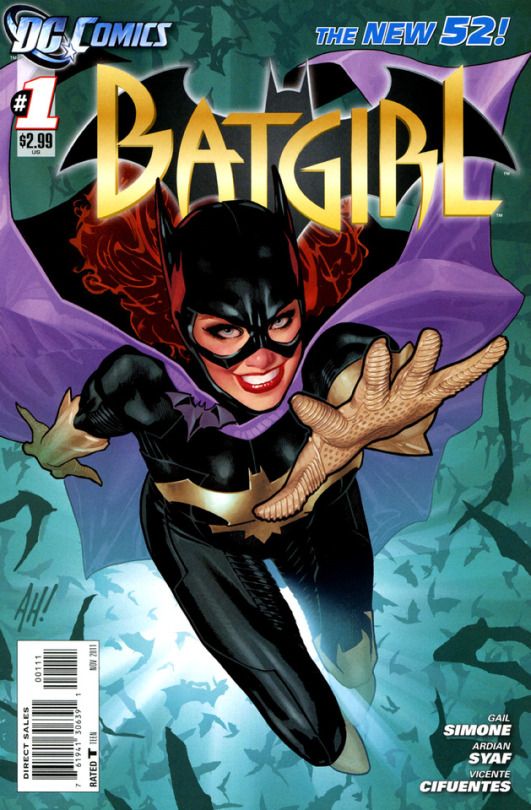
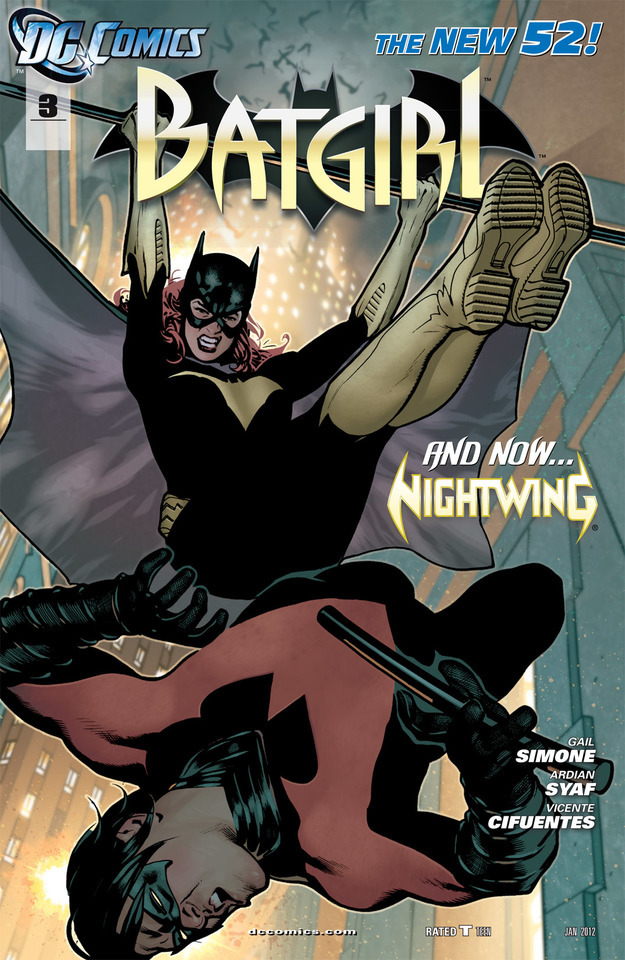


BATGIRL #1-4
NOVEMBER 2011 - FEBRUARY 2012
BY GAIL SIMONE, ARDIAN SYAF, VICENTE CIFUENTES AND ULISES ARREOLA

SYNOPSIS (FROM DC DATABASE)
Somewhere, an elderly Graham Carter waters his garden. A mysterious figure comes up behind him, and identifies him as a man who survived the sinking of a transport ship, when all 27 others of the crew did not. The strange man introduces himself as the Mirror, and then takes the hose from Mr. Carter, jamming it down his throat, and drowning him with the water within. Crossing Carter's name off the list, the name Barbara Gordon is written below it.
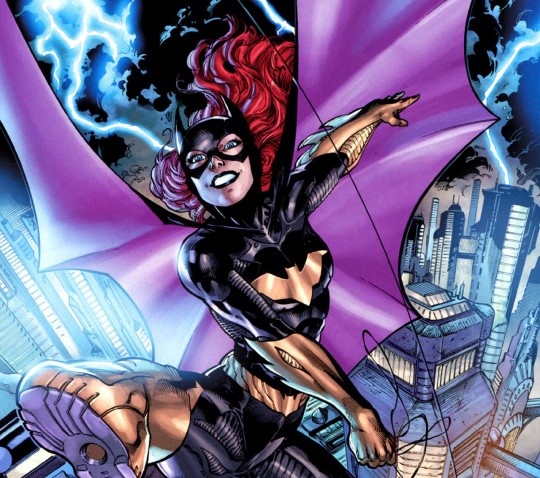
Later, Barbara Gordon patrols Gotham City, finally having returned to her role as Batgirl. High above the city, she spots the killers she's been trailing.
A group of masked thugs are holding the Ortega family at gunpoint while their leader explains why he likes home invasion and murder. He shows them a scrapbook documenting all of their recent killings, and introduces his gang as what the media has dubbed the "Brisby Killers." The leader notes that he picked the Ortegas out of the phone book, and that if the parents cooperate, they may leave the kids alone.
Suddenly, Batgirl smashes through a window, knocking one of the thugs to the ground. She loves the exhilaration of leaping into melee combat, noting that her upper body strength is greater than most, as she knocks out a thug with one punch by accident. After taking out all of the others, only the leader - the gunman - remains. She can see it in his body language that he intends to shoot the Ortegas.
Thinking on her feet, she tosses a batarang into the leader's wrist. Angrily, he tackles her, launching both of them out the window. He winds up dangling at her mercy, and she ties him to the balcony before securing the others and leaving the scene.
That night, Barbara dreams of the past. She was once the Batman's star pupil, but one night, she answered her door to find the Joker standing there with a gun pointed at her. He shot her, and the bullet went through the first lumbar of her spinal cord, paralyzing her from the waist down for three years.
She wakes from her nightmare, and remembers where she is. Fortunately, she regained her ability to walk, since that night. She walks in on her father, James, enjoying a cup of coffee. He informs her that it is actually evening, and she has slept all day. She has plans to move out today; to move into her own place, and "stretch her legs."
Barbara's new place is in a building called Cherry Tree Hall, and her roommate is a bartender by night and painter by day. Despite her new roommate's quirky personality and penchant for activism, Barbara thinks they will get along well. She offers to help Barbara move in, but becomes distracted by the wheelchair lift in the van. She tries not to admit that it was once meant for her.
At Sacred Hands of God Hospital, the thug that Batgirl injured with her Batarang is receiving treatment, and remains under watch by Detective Mel McKenna and her partner. In the same hospital, The Mirror asks to see a Theodore Rankin before punching the receptionist in the face and shooting a security guard. McKenna and her partner hear the shots, and prepare to face whatever awaits them.
Barbara has rigged her phone to receive her father's messages, so that she can follow up on any calls for police assistance. Discovering what's happening at the hospital, she gets her motorcycle out of her van, and rides to the scene. She rides her bike right into the building and onto the elevator.
As the Mirror makes his way to their room, McKenna and her partner warn that if he doesn't get away from the door, they will shoot. In response, the Mirror blasts through the door, shooting McKenna and her partner in the process. McKenna survives, but her partner is not so lucky.
The Mirror approaches the injured thug, claiming that he should have fallen to his death during the altercation with Batgirl, and that has put him on the list. Barbara reaches the scene, and attempts to intervene, but the Mirror aims his gun at her in just the same area that the Joker had when he crippled her. Lost in her memory, she freezes long enough for the Mirror to shove the patient's bed out the window, into a long drop to the street below.
Having watched the whole scene, McKenna accuses Batgirl of being a murderer as she stood there and did nothing to stop it.
Batgirl realizes that she has not fully recovered psychologically from the shooting that crippled her years ago. When the Mirror pointed a gun at her, she froze, and failed to save Detective Douglas Paulson from being shot to death, and failed to stop the leader of the Brisby Killers from being thrown out of the hospital window to his death.
The Mirror prepares to make his escape, but Paulson's partner, Detective Mel McKenna - who blames Batgirl for his death - points her own gun at the killer. She is unfortunately suffering from a likely concussion, and can't aim her weapon properly. She is forced to impotently shout after him as he leaves and Batgirl gives chase.
Batgirl vows to catch the Mirror, chasing him across rooftops and finally leaping down and kicking him from behind. Unfortunately, she misjudges her speed, and both of them are thrown off the edge of a building. Desperately, they both grip an outcropping gargoyle. Strangely, the Mirror seems to have unfinished business. Sympathetically, Batgirl reaches down to help him, but he reveals that she is on his list of intended victims, and wrenches her by the arm from her foothold, throwing her into a free-fall.
Desperately, Batgirl releases her Batrope, grappling onto another outcropping. Unfortunately, her trajectory brings her to street level, and she slams hard into the side of a moving taxi. Naturally, this angers the cab driver, and Batgirl is forced to drag herself up, nurse her cracked ribs, and shuffle away.
Back at the hospital, Detective McKenna refuses medical attention, despite being quite shaken. Eventually, Commissioner Gordon appears, and commands McKenna to allow the attending physician to look at her. He orders that she take mandatory bereavement leave and return after the department psychologist clears her. Before she leaves, McKenna warns that there will need to be a second warrant; one for Batgirl's arrest. The Commissioner is visibly shaken.
Batgirl follows Mirror's trail to the Hollows, an exclusive cemetery reserved for Gotham's rich and privileged. He senses her presence quickly, and calls out to her. She leaps out, but she is no match for him, and he lands a heavy punch in her gut. Knowing that she can't take another hit like that, Batgirl resorts to her wits instead, trying to tire him out by dodging his attacks. Charging him, she manages to steal his list from within his robes. He swipes it back from her hand, enraged that she would dare to look at it. Then, the sound of sirens fills the air, and before she can react, the Mirror is gone.
Without anywhere else to go, Barbara Gordon changes out of her costume and winds up at her new apartment. When her roommate Alysia Yeoh answers the door, she is surprised to see Barbara there, crumpled, wounded, and seconds away from blacking out. Barbara wakes in Alysia's bed. Alysia spares little time in drawing attention to Barbara's obvious injuries, and warns that she is one minute away from calling the police. Barbara assures her that she is not being abused, and is not a criminal - but she won't tell her what's really going on. Barely convinced, Alysia offers to make Barbara some soup. Awkwardly, Barbara asks to borrow something cute to wear.
Later, in her borrowed dress, Barbara has a date with Gregor, her physical therapist. He has worries about the ethics of dating a patient, but Barbara reassures him. They walk through the park, and he asks her why she doesn't talk about when she regained the use of her legs. Barbara responds that she doesn't believe in miracles, and wonders why - if someone is handing them out - she was a recipient. Gregor tries to assure her that some miracles do happen, and that her recovery doesn't have to come at a price.
Later, Barbara does some research at the library, following a lead she picked up on from Mirror at the cemetery. He had mentioned fire, and she assumes that it must have been significant to his reason for being there. She cross-references fires with people who match the Mirror's physical description, and finds the story of a federal agent, Jonathan Mills, who was the sole survivor of a car crash.
Batgirl heads to his apartment, finding that the windows have been rigged with alarm trip wires. The alarms seem to be deactivated, though, and she breaks in. Inside, she finds a veritable arsenal of weapons. Suddenly, the Mirror appears on a large video monitor and addresses her. He explains how he had been forced to watch as his family burned to death in the back of his car while he survived. He feels responsible, and believes that he should have died too.
The Mirror shows her a news clipping showing a man who collapsed on some train tracks, but was saved by a stranger. In response, the Mirror has placed a bomb on the train that the man rides to work daily - for a sense of closure. The Mirror plans to use whatever means necessary to bring an end to all miracles.
With the Mirror mocking her through her ear-piece, Batgirl races to one of Gotham City's trains in order to save a man whom the Mirror has marked for death merely for having survived an event miraculously. Rupert Ansell had fallen onto the train tracks on his morning commute, and had been saved at the last second by a good Samaritan going the opposite direction. The Mirror's MO sees him murdering anybody who seems to have been saved by a miracle, because he doesn't think miracles should be believed in. Batgirl knows better, because the fact that she's standing at all is a miracle.
Banging on the engineer's window, Batgirl determines that the train can't be stopped, and the doors can't be opened. Frustrated, she gets inside by smashing in through one of the windows. Rather than try to find the bomb that the Mirror has planted, she searches for Ruper Ansell himself. When he comes forward, she sends the other passengers out of the car. Understanding the Mirror's method, Batgirl banks on the fact that she is also on his list.
She wraps her arms around Rupert Ansell, knowing that the Mirror can't blow him up without blowing her up too. Batgirl is on the list because she miraculously survived a fall during an encounter with the Brisby Killers. If she dies by explosion, it will thwart the Mirror's plans. However, the Mirror has the upper hand, as he reminds her that the good Samaritan also survived by a miracle. Moments later, the train going in the opposite direction blows with Rupert Ansell's saviour on board. Batgirl saved one man, but allowed another to die.
Two hours later, Det. Mel McKenna tries to convince Commissioner Gordon to let her come back in to work. The Commissioner reminds her that protocol requires her to see a psychologist about her partner's death before she can come back to work. Grumpily, McKenna decides to hold her own investigation into Batgirl, who she blames for her partner's death.
Barbara visits her father at work, and invites him to lunch. She is obviously shaken about her encounter with the Mirror, and the man she allowed to die. Her father sees it, but rather than open up, all she can do is tell him that she misses him. Seeing that she's upset, her father expresses worry that she's taking on too much. She has only just recovered from her injury, and he worries that she will relapse if she works too hard. He can't take lunch with her because of a lead, and Barbara watches him go, wondering if people really see her as that breakable.
That night, Batgirl breaks into the police impound lot, having left her Batcycle outside the hospital the night before. She is interrupted by Nightwing, though she claims to have known he was tailing her the whole time. She invites him onto the back of the bike, and they crash through the fence, speeding through the twilight streets of Gotham.
Though she loathes to admit it, the feeling of Dick's arms around her on that bike makes her feel very good. Parking the bike, Barbara demands to know what Dick is doing there. Awkwardly, he admits that he's checking in on her because he and Batman are worried that she could end up back in the wheelchair if she's not careful - just like her father does. Frustrated, he is forced to simply ask whether she can handle the Mirror on her own. In answer, Barbara kicks his feet out from under him, and rappels off into the night.
She recalls how she and Dick used to chase each other like this even back when they first met - he an acrobat, and she a ballerina. Despite his cockiness back then, his kindness made up for a lot of it - and it became easy to like him. Richard Grayson was the first boy Barbara ever had a crush on who wasn't a scientist. Admittedly, she still feels the way she did during that first crush when she's around him - but it's an admission she can barely make to herself.
When Dick catches up to her, Barbara decides that she's had enough of well-meaning boys, from Dick to Batman - even her father. She will have no more of men trying to protect her when she doesn't want or need it. She says that if men keep on trying to protect her, she would send them back with blackened eyes. She begins physically sparring with Nightwing, offering little quarter, and forcing him to defend himself. Finally, he yells out that the reason that he and Batman have been worried is not because they doubt her, but because they love her. Shocked, Barbara realizes that she has been pushing away those who love her because she craved understanding more than pity; respect more than comfort.
Playing off her realization casually, Barbara states firmly that she has to do this - face this - alone. She cuts off a lock of her hair and places it in Dick's hand, stating that if he can't let her do it alone, then they can't be friends. Reluctant, but understanding, Dick lets her go.
Barbara Gordon's dreams are full of guilt and symbolism. She blames herself for recovering from the injury that kept her trapped in a wheel chair until nearly a year ago. She wonders why she was allowed a miracle when so many others don't. The dream is recurring, and Barbara wakes up in a sweat.
Wandering out of her room, she finds her roommate Alysia sitting near their Christmas tree, having just got off of her late shift at work. Barbara sits down beside her, and the two of them discuss Christmas. Barbara awkwardly describes her best Christmas gift, how her mother walked out when she was twelve, and a year ago that night, her father gave her news of a South African clinic which might be able to help her. Alysia correctly deduces that the wheelchair ramp in Barbara's van was for her. Barbara feels uncomfortable talking about something so personal to her, and hurriedly makes excuses to leave. She's so flustered that she forgets to put on shoes.
To get away from all of the questions, Barbara goes out as Batgirl. She happens upon a gang of thugs holding up an affluent couple. The thugs are using an app for their smartphones which shows them where the Batman is at any given time based on reports, to be sure that he won't interrupt their crimes. Which means that they are not expecting it when Batgirl appears.
Thinking about her case, Barbara is glad that her eidetic memory has allowed her to remember all of the names on the list that she stole from the Mirror, before he stole it back. Naturally, that memory has other uses, like making it easy to take out predictable thugs with inadequate weaponry. Quickly, she disposes of the thugs with surgical precision. The couple are grateful, hugging her to them, glad to be able to see their children again.
The mention of children gives Barbara an idea. Knowing that Mirror feels a responsibility to his murdered wife and daughters, she leaves a note for him at the Hollows Cemetery. The note condemns him for murdering when his own family was murdered, claiming that his feeling that miracles should not happen is no justification for murder. She invites him to Sprang Park for a showdown, after revealing that she has already given the GCPD all of the names on his list, as well as his modus operandi.
At Sprang Park, Batgirl lures the Mirror into the Hall of Mirrors. In the ensuing fight, Barbara realizes that she is outmatched, but still manages to land a powerful kick to his face that smashes the mirrored mask which covers his face. Using the distraction, she activates a projector, which causes the image of Jonathan Mills' family's destroyed car to appear on every mirrored surface in the room, including Mills' own armour. The image shakes him, and he collapses, allowing Batgirl to land a heavy punch which sends him into unconsciousness. Standing over him, she states that sometimes, extraordinary things happen to the worst people, and the best people do suffer. Sometimes, people get their miracles whether they deserve them or not. As she says this, she begins to come to terms with her own survivor's guilt.
Later that night, Barbara and Alysia exchange gifts, and grow closer. When Alysia asks about Barbara's family, she responds that she is used to simple holidays with just her father and brother. Suddenly, the doorbell rings, and Barbara is surprised to find a woman who bears a strong resemblance to her standing there. The woman introduces herself as Barbara's mother.
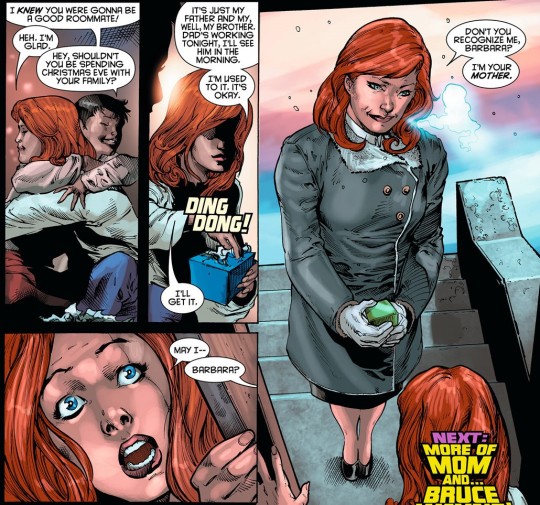
REVIEW
I have mixed feelings about this story.
First of all, by the editorial decision of returning to Barbara Gordon’s Batgirl. Many agreed that Barbara becoming Oracle was an amazing role model for people facing disabilities. At the same time, Nostalgia played a big part on this and when you have to reset your universe... would you make Stephanie the first Batgirl?
Gail decided to leave the “killing joke incident” in continuity, and Barbara instead of overcoming that tragedy by becoming a different type of hero, she made her go back to be Batgirl. This is also an inspiring story for people with disabilities, but the fact that she got help from science that doesn’t exist in our world, is not that inspiring.
I also don’t have fond memories of this run, other than the appearances of James Gordon Jr, but my guess is that, that happened because of the many crossovers and because I was reading it month by month. When I think of the new 52 Batgirl, I think of the DCYOU one.
Reading the full story in one sitting is different though. Both Barbara and Mirror have similar inner conflicts, and while at the end, looking at herself in the mirror makes her stronger (or at least, makes her face her fears, another inspiring story), when Mirror looks at his reflection, all he sees is death (well, those photos of his dead family were probably the reason). So the story itself is well crafted in it feels personal.
What I didn’t buy much was the villain. I know of survivor’s guilt, and it is strange that this character was also an ex soldier (he managed to survive the war without this issue). It’s just that I have problems believing that a person with this problem would go on to kill survivors of completely disconnected accidents.
Still, some of these changes made a good impression and Alysia Yeoh became a regular supporting character of the DCU. A character with double diversity (Asian + transgender).
The art looks nice, but maybe that is one of the reasons I do not remember this story that much. There is nothing that really moved me about it, and there were moments that should have (the many instances when Barbara was afraid of losing her legs again). I don’t think it’s bad, and at least it isn’t too sexual, but still, didn’t make a mark on my memory.
I give this story a score of 8.
#adam hughes#batman80#batman#batgirl#dc comics#comics#review#2011#2012#post modern age#the new 52#lgbtqi
17 notes
·
View notes